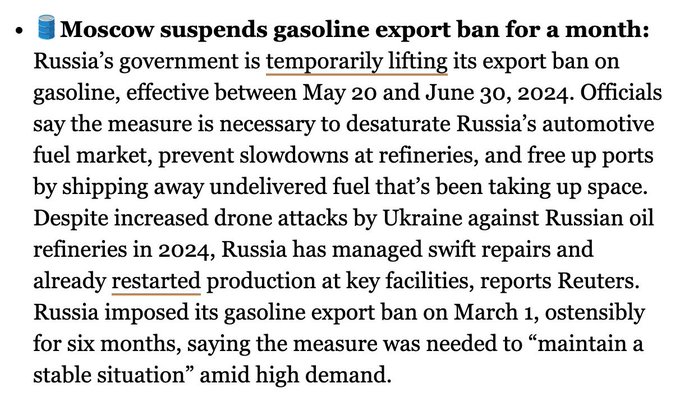owais.usmani wrote:“The main question in my mind would be the status of the LNG membrane storage system within the GBS, given GTT's departure from Russia a year ago,” Seligman cautions.
...
the project’s overall future has become increasingly uncertain following targeted US sanctions. Novatek’s European, Japanese, and Chinese partners have exited the project under force majeure declarations.
The latest round sanctions bar the purchase and transport of LNG from the project. Thus, questions mount who Novatek will sell its LNG to and aboard which vessels it will deliver it. France’s TotalEnergies announced last week that it will not take receipt of any LNG from the project in 2024.
Novatek may try to sell its LNG at a discount on the spot market to buyers in Asia.
“It is possible that prices for sanctioned Russian LNG would be cheaper than for other supplies, but in this case, Chinese importers would have to resell their cargoes from other suppliers and replace them with Russian supply,” explains Jason Feer, global head of business intelligence at Poten & Partners.
“India would be in a similar situation, though they are more price sensitive so discounts on Russian supply may be more attractive."
The project’s future may in part hinge on the ability of Novatek's partners, including China’s state-owned oil major, the China National Offshore Oil Corporation (CNOOC) and China National Petroleum Corp (CNPC), to secure sanction exemptions.
“But China and India may only be able to take Russian cargoes if they can get waivers of sanctions or if ship owners are willing to breach sanctions, which I doubt most are willing to do,” concludes Feer.
Production of LNG at the facility began about 3 weeks ago and storage tanks will reach capacity by the end of January according to industry reporting.
“It remains to be seen how Seapeak, Mitsui O.S.K. Lines (MOL) and Dynagas [operators of the Arc7 LNG carrier fleet. Journ.note] will react once the first cargo is ready to be loaded,” confirms Mehdy Touil, a LNG Operations Specialist, who in the past worked as a senior operator for Novatek’s Yamal project.
This article is pretty stupid. There are Chinese companies which make membrane tanks for LNG with their own IP. There is no need to use French company GTT's technology at all. As for the US sanctions the Chinese will just find ways to go around them. Chinese natural gas pipelines and gasification facilities are owned by PipeChina. Not CNOOC or CNPC. The Chinese recently split their natural gas transmission, from the exploration, and the consumer sales. They will just do like they do with Iranian oil. Some Chinese company no one ever heard of before will buy the natural gas from Russia and put it into their gas system. And good luck using US sanctions on PipeChina or the Chinese gas consumers. I doubt the Chinese will take a direct threat to their gas infrastructure peacefully.
As for LNG ships. The Chinese can build those just fine. They built several (4) for Yamal LNG. But stupidly for this project they decided to order them from South Korea instead. And it's not like the South Koreans are sanctioning sales or construction of ships to Russia. They aren't. The problem is the SWIFT sanctions make financial transactions between Russia and South Korea difficult and good luck using any US/European/Japanese components in them.
Do these people think that the French and Japanese are just going to keep their Arc7 LNG tankers if they lose access to the Yamal or Arctic LNG 2 projects? These ships are basically useless except for getting natural gas from Russia. And they cost a boatload of money. So what do these people think will happen? The same thing that happened to those oil tanker ships which lost their business because of Western sanctions of Russian oil. They will find a shell company in the Middle East, India, or whatever and move them there. These people are really stupid. As if the ship owners will lose hundreds of millions because of US sanctions. Some of those ships are even partly owned by Chinese company COSCO for example. They won't just take a hit to their balance sheet without fighting over it.
Finally, even if those ships cannot be used they can always build more.






 ALAMO
ALAMO